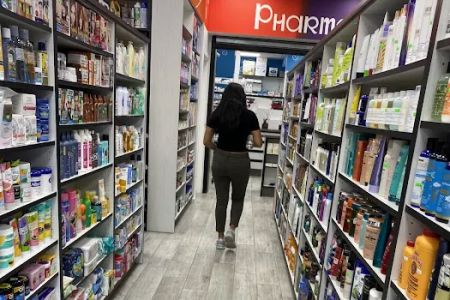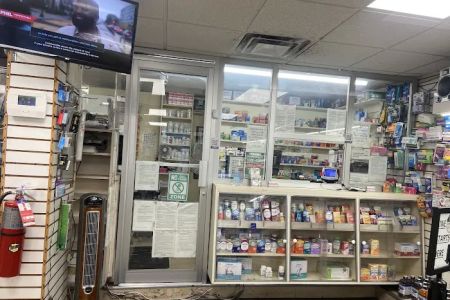How to Address Cultural Competency in Pharmacy Practice
As a pharmacist, I’ve witnessed firsthand how cultural competency can significantly impact patient care. In our diverse society, it’s not enough to simply provide medications and counseling; we need to understand and respect the unique cultural backgrounds of the people we serve. Over the years, I’ve learned that addressing cultural competency in pharmacy practice is not just about making adjustments to our communication styles—it's about being proactive in creating an inclusive environment that fosters trust, understanding, and optimal health outcomes. Here’s how we, as pharmacists, can address cultural competency effectively in our practice.
1. Understanding the Importance of Cultural Competency in Pharmacy
When I first began working as a pharmacist, I didn’t fully appreciate how cultural differences could influence health outcomes. I knew the basics of patient care, but I quickly realized that communication and cultural understanding were just as important as dispensing medications. For example, a patient’s cultural beliefs might affect how they view certain treatments, medications, or even the role of healthcare providers. These differences can impact adherence to treatment plans, overall health outcomes, and the patient’s trust in their healthcare providers.
Addressing cultural competency is crucial because it helps pharmacists deliver patient-centered care that respects and aligns with patients' values, preferences, and beliefs. Without understanding these factors, even the best medical advice can fall on deaf ears. For instance, a patient from a different cultural background might have strong beliefs about alternative medicine that could influence their willingness to take prescribed medications. Acknowledging and respecting these beliefs, while still offering appropriate guidance, helps build a stronger pharmacist-patient relationship.
2. Educating Yourself About Different Cultures
One of the first steps in addressing cultural competency is educating ourselves about the various cultures we serve. I found that even small changes in my approach to patient care, like learning a few key cultural practices or beliefs, made a world of difference. I took the time to research common cultural values and health practices among the different communities I served, and I learned a lot about how these factors influence their healthcare decisions.
For example, some cultures may prioritize family decision-making in healthcare, while others may focus more on individual autonomy. Understanding these differences helped me adjust my approach to patient conversations, making them feel more heard and respected. I also became aware of dietary restrictions or preferences, such as halal diets in Muslim communities or vegetarianism in certain Hindu populations, which allowed me to provide more personalized advice when recommending supplements or discussing nutritional aspects of treatment.
3. Effective Communication Techniques
Effective communication is at the heart of cultural competency. I learned that simply speaking clearly and in layman’s terms isn’t enough. Cultural differences can affect how patients understand health information. Some patients may prefer to take information home to discuss with family members, while others may expect detailed explanations in person. Others might not feel comfortable discussing certain aspects of their health due to cultural taboos. It’s essential to adapt my communication style to make sure that every patient feels comfortable and understood.
In my experience, active listening is a powerful tool. By listening carefully to my patients and asking open-ended questions, I was able to gain deeper insights into their needs and preferences. I also made sure to use interpreters or bilingual staff when necessary, which ensured that language barriers didn’t hinder effective communication. Offering written instructions in patients' preferred languages and using visuals when explaining complex medical terms also helped bridge gaps in understanding.
4. Respecting and Addressing Beliefs and Values
As a pharmacist, I’ve often encountered patients whose beliefs and values didn’t align with traditional medical treatments. For instance, some patients from certain cultural backgrounds may avoid medications that are derived from animal products or prefer to use herbal remedies instead of prescription drugs. I’ve learned that respecting these beliefs doesn’t mean compromising on care. Instead, it’s about offering alternatives and finding common ground.
In one instance, I had a patient who was hesitant to take a prescribed medication due to her belief in natural healing practices. Rather than dismiss her concerns, I took the time to discuss her preferences and provide alternative options, such as discussing the potential benefits of herbal supplements alongside her prescribed treatment. This open and respectful dialogue helped her feel more comfortable with her treatment plan and ultimately improved her adherence to the prescribed regimen.
5. Creating an Inclusive Pharmacy Environment
Creating an inclusive and welcoming pharmacy environment is another crucial step. I’ve learned that fostering an environment where patients feel safe to express their cultural preferences can improve their overall experience and trust in healthcare. In my pharmacy, we made efforts to hire diverse staff members who could relate to patients from different backgrounds and cultures. This not only helped with language barriers but also created a more inclusive atmosphere where patients felt understood.
Additionally, we ensured that our pharmacy’s materials were culturally sensitive and free from biases. For example, we included images that represented diverse populations in our health brochures and educational materials. Making these small adjustments not only made our patients feel more comfortable but also demonstrated that we were committed to meeting their unique needs.
6. Training and Continuing Education for Pharmacy Staff
One of the most impactful steps I took in addressing cultural competency was encouraging ongoing training and education for my pharmacy team. I realized that cultural competence is an ongoing journey, not a one-time fix. We attended workshops and seminars on cultural sensitivity and diversity, and I found that these sessions provided valuable insights and strategies for improving patient care.
Through this training, my team and I learned how to better recognize and address unconscious biases, improve cultural awareness, and enhance communication skills. We also discussed strategies for creating a more inclusive pharmacy practice that truly reflects the diverse needs of the communities we served. This ongoing commitment to education helped us stay current and informed about cultural issues that could impact patient care.
7. Collaborating with Community Leaders
Another valuable lesson I learned was the importance of collaborating with community leaders to improve cultural competency. Engaging with local community organizations, religious groups, or cultural leaders allowed us to gain deeper insights into the specific needs of different populations. These partnerships helped bridge gaps in healthcare access and fostered trust within communities that may otherwise feel marginalized or misunderstood.
For example, I worked closely with a local immigrant community group to better understand the healthcare challenges they faced, including language barriers and cultural differences in health practices. By collaborating with these leaders, we were able to provide more tailored health resources and education, which ultimately led to better health outcomes for the community.
Incorporating cultural competency into pharmacy practice is not just a way to provide better care—it’s about building trust, improving patient satisfaction, and ultimately creating a more inclusive and equitable healthcare system. By educating ourselves, respecting diverse beliefs, communicating effectively, and engaging with communities, we can make a significant impact in improving healthcare for all.
If you're looking to enhance your cultural competency in pharmacy, I highly recommend exploring the resources and services offered at Pharmacy. They offer valuable training, tools, and support to help you provide the best possible care for all patients.














